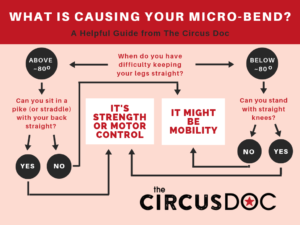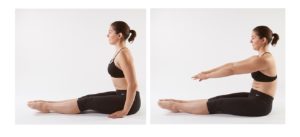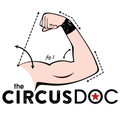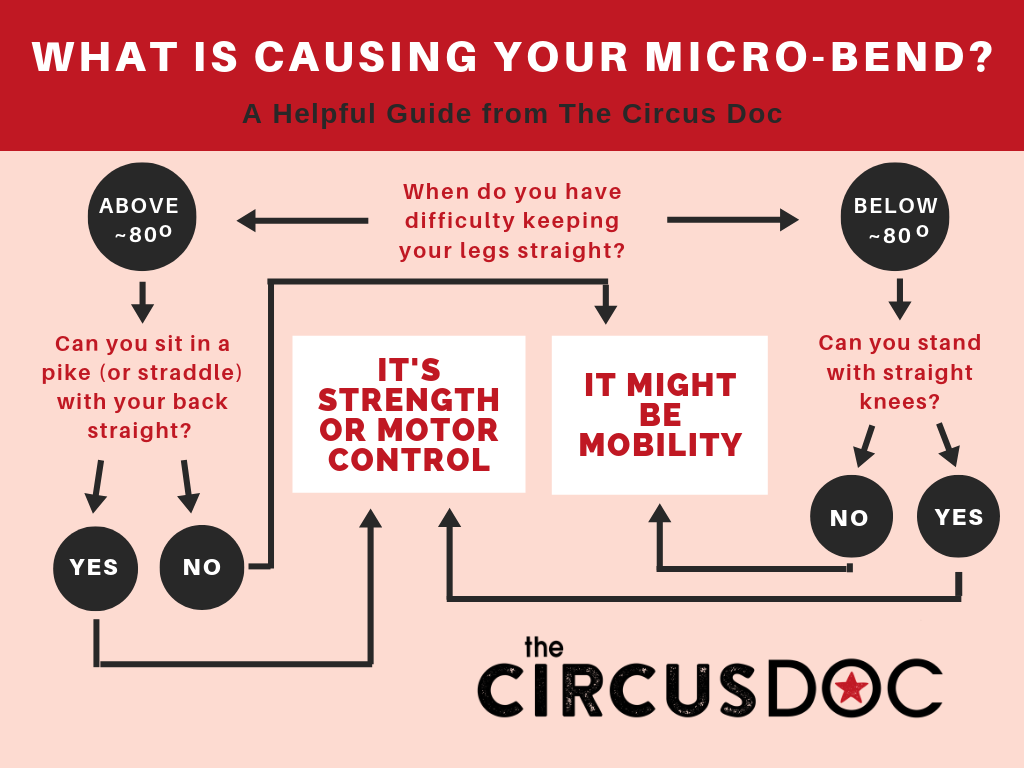The Secret to Conquering your Micro-bend
So, you can point your toes and straighten your legs, but when you start to lift them up… the dreaded micro-bend occurs. WHY?!?
No matter how hard you are thinking about it and how much of your focus is on it if you still can’t keep your legs straight, what is causing your micro-bend?!?
This blog (and the follow up) will be kind of like a treasure hunt. See if you can find the description that is most like you for more information. In today’s blog, we will start by dividing micro bend issues into Mobility based OR Strength/Motor Control based. The next blog will tease out the differences between strength and motor control and talk about what happens when we lift our legs through space.

Is it your mobility or strength or motor control?
If you can climb a stair and stand with your knees straight but have trouble keeping your legs straight in the beginning ranges of motion (below about 80⁰) mobility is not your problem. In that case, neither is strength. When climbing a stair, you press your entire body weight up through a single leg squat. Instead, your micro bend is caused by HOW you are moving and not your strength or mobility.
If you can straighten your knee, but still think your leg looks bent, it is often your wonderful strong muscles that give that appearance. Try slightly turning out your leg from the hip to improve the optics (and possibly help your lift, but more on that later)
If your knee hyperextends, congratulations you will have a gorgeous line, and the responsibility of making sure you keep control over the joint to protect it.
What if your difficulties don’t happen until the middle range of motion or closer to 90⁰?
Can you passively straighten your leg at ~90⁰ of hip flexion? (e.g. can you sit in a pike with your knees straight and pelvis vertical?)
No? That would most likely be a mobility issue. Yes? If you have the mobility passively then you need to learn how to control it and make sure you have enough strength to actively use it.

Notice the difference in her pelvic positioning in the two pikes below. The more “slouched” position might indicate a mobility difficulty.
If you have a problem with your mobility you need to consider possible limiting factors like neural tension, muscular or structural restrictions.
If you have mobility limitations, active flexibility training of the hamstrings is a great place to start, but remember there are other muscles and structures that cross the back of the knee. If you have questions, ask a medical professional to determine what might be limiting your motion and how to best address it.
Try these exercises to gain mobility in stiff hamstrings
Make sure you are thinking about sticking your butt out and bending out the hips throughout the movement. Do not move from your back. Think about keeping your spine straight.
Bend forward in the position you want to gain mobility (feet together in a pike, feet hip width apart, or in a straddle). Bend and then press your knees straight as you try to keep a flat back forward bend position. Make it more difficult by bending forward more from your hips.
Want to learn more about your body and how it works in the air? Check out my online courses

